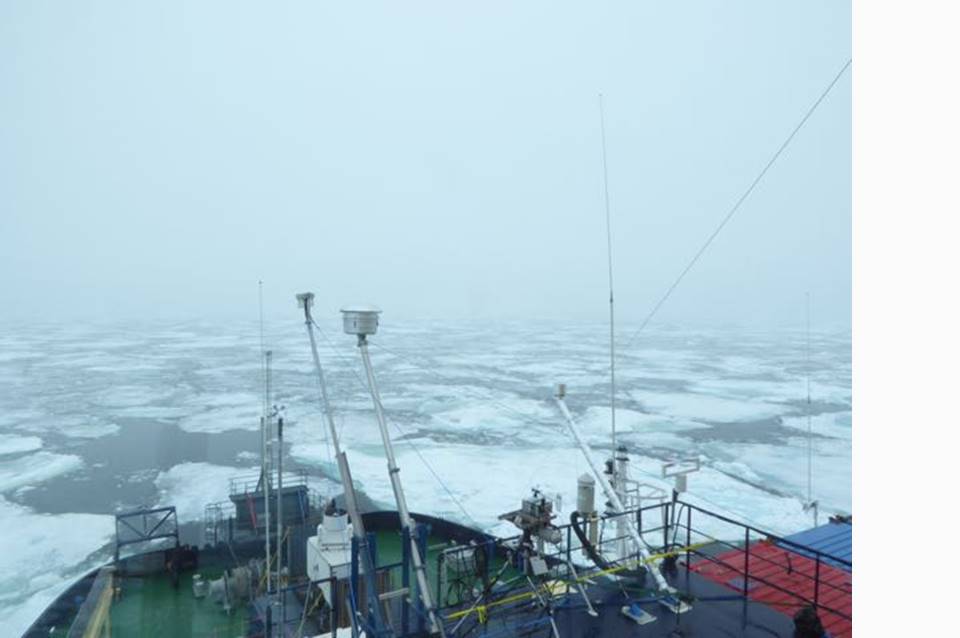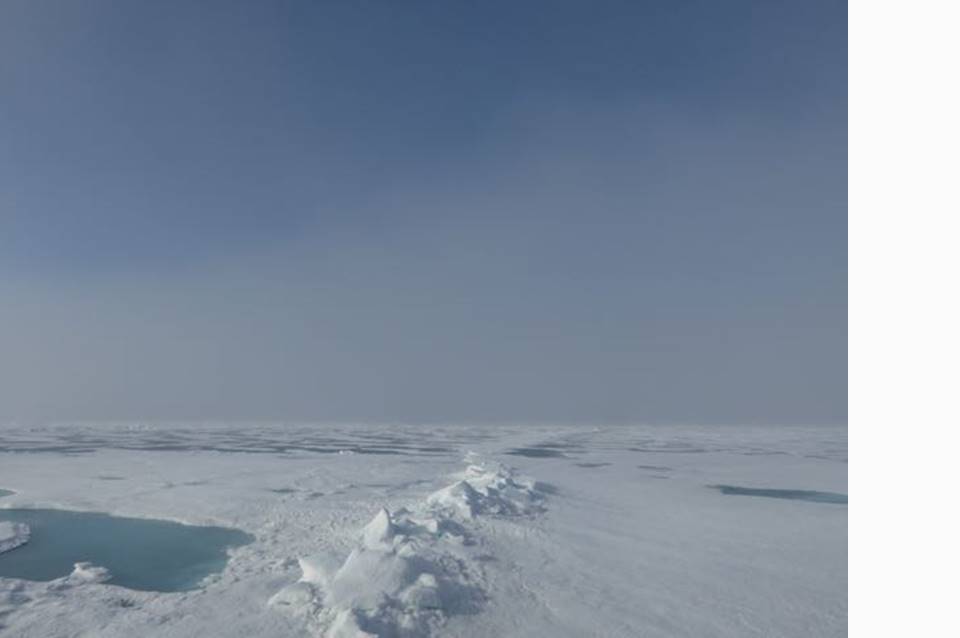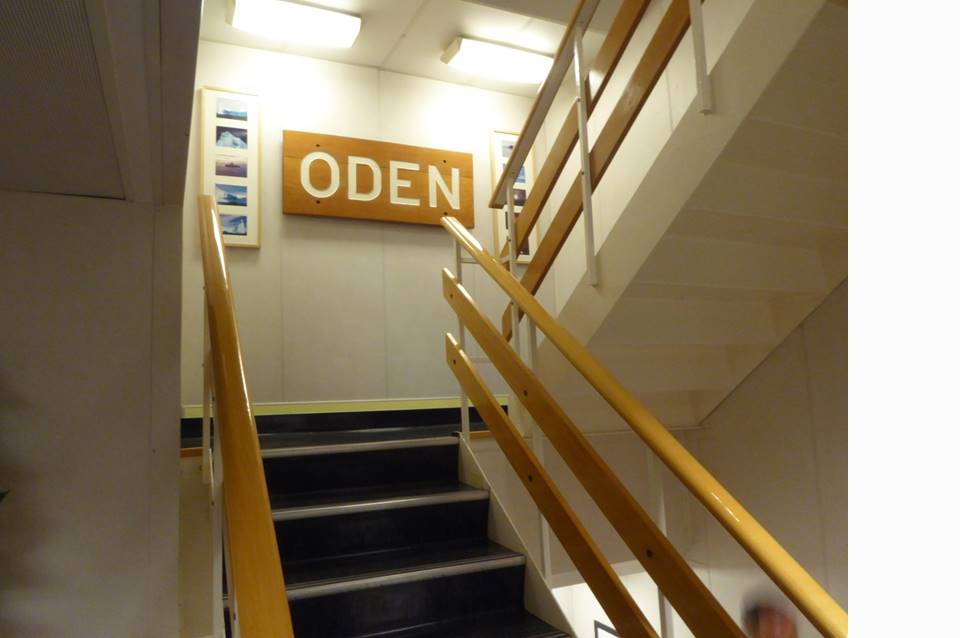Day 5: Sun and sea ice
MOCCHA research expedition 2018
on board the Swedish Icebreaker Oden
Ship’s position is 83º 2’ N, 18º 5’ E
It’s only 36 hours since the first sighting of sea ice, but the icescape has already changed six or seven times. First it was isolated floes, separated by oddly smooth water. Then came big angular chunks around half a metre thick and ten metres across, fitting loosely together like giant shards of broken glass.
Next were scattered curvy islands, carrying light blue meltponds with the irregular kidney bean shapes of the swimming pools in holiday adverts, followed by thicker continuous ice punctuated by ridges of shattered blocks. The whole ship vibrates as the bow ploughs through the thicker patches, and the shaking is only going to get more intense as we progress to the north. We’re working our way around the super-dense ice to the west, and we’re apparently making good progress. Today the sun even came out, after 48 hours of fog.
Five days in, the ship already feels like home. It’s astonishing how quickly people adapt to limited living arrangements when there’s no choice, and Oden has really nice facilities on the inside (certainly by research ship standards). The outside isn’t quite as pretty. Ships are always full of staircases, but because a lot of the indoor space on Oden is stacks of standard shipping containers, converted into offices and labs, workshops and storage cupboards, it’s become a giant climbing frame. It’s about 100 steps up the indoor staircase from the main deck up to the bridge, and getting from there to most of the labs involves going down and round and up and across and over most of the superstructure of the ship. I did have step-ups in my list of circuit training exercises for the gym, but I took them out because it seemed ridiculous. I’m doing step-ups all day long (which is just fine by me - I will never complain about extra exercise!).
After reaching the ice edge, we stopped for one 24 hour calibration station, just pushing gently into the wind so that the atmospheric measurements of air, particles, clouds and wind could be calibrated. Next stop: the North Pole. We expect to find the sort of ice we’re looking for just on the other side, and so we have a planned route which will take us to the pole itself. My scientific work hasn’t really started yet, because I haven’t been able to unpack my equipment, but there’s been plenty to do: training for work on the ice, getting to know everyone on the ship, working out the laundry arrangements and the best times to use the gym. And meal times. A ship schedule is designed around mealtimes. It sounds odd, but having a strict schedule is actually really important. It won’t get dark for a month, and when it’s foggy or cloudy, there’s no way to tell where the Sun is. The mealtime routine gives everyone some structure. And there are treats along the way: today is Saturday, and that means a slightly nicer dinner, and a much more sociable evening, Swedish-style.
Before all that, I’m going back up to the bridge, to sit and watch the ice. Apparently we passed one polar bear yesterday, but most of us didn’t see it. Everyone is on the watch for more. A sighting would be special - we might see three or four on the whole trip - but also a reminder that we’re looking at a seascape that is disappearing, and a species that may disappear with it. But just now the sun is out, and even without any bears, the view is stunning. I can’t wait to see how it changes as we reach the thicker ice we’re aiming for.
To see Oden's current position, see the Stockholm University live ship tracker here.



